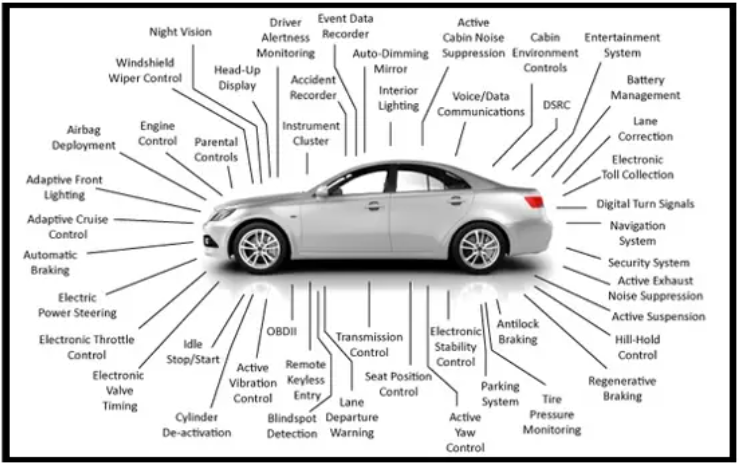The price of automotive electronic products is generally higher because they use automotive-grade electronic components. Let's talk about the differences between automotive-grade electronic components and general consumer-grade electronic components.

Temperature
Depending on the installation location, there are different operating temperature requirements.
Engine compartment: -40℃-150℃;
Car Body control: -40℃-125℃;
Civilian products: 0℃-70℃.
Anti-interference
Automobiles have extremely high requirements for the anti-interference performance of devices, including anti-ESD static electricity, EFT group pulse, RS conduction radiation, EMC, EMI, etc. The chip cannot lose control and affect the work under these interferences, nor can it interfere with other devices in the car.
Dependability
Design life: The general design life of a car is about 15 years and 200,000 kilometers, which is much longer than the life requirements of consumer electronics products.
Under the same reliability requirements, the more components and links the system consists of, the higher the reliability requirements for the components. At present, the degree of electrification in cars is very high. From the powertrain to the braking system, a large number of electronic devices are installed, and each device is composed of many electronic components.
Manufacturing technology
Automobile parts are constantly developing towards miniaturization and lightweight. Generally, larger packages are used to ensure sufficient mechanical strength and comply with the manufacturing processes of major automobile suppliers.
Standards
AEC Q100 Requirements for active parts
AEC Q200 Requirements for passive parts
To meet automotive standards, it is necessary to obtain one of the reliability standards AEC-Q series and the quality management standard ISO/TS16949 certification. In addition, it is necessary to pass the functional safety standard ISO26262 ASILB(D). Basically, only semiconductor devices that meet the above-mentioned hard conditions can pass automotive-grade certification.
